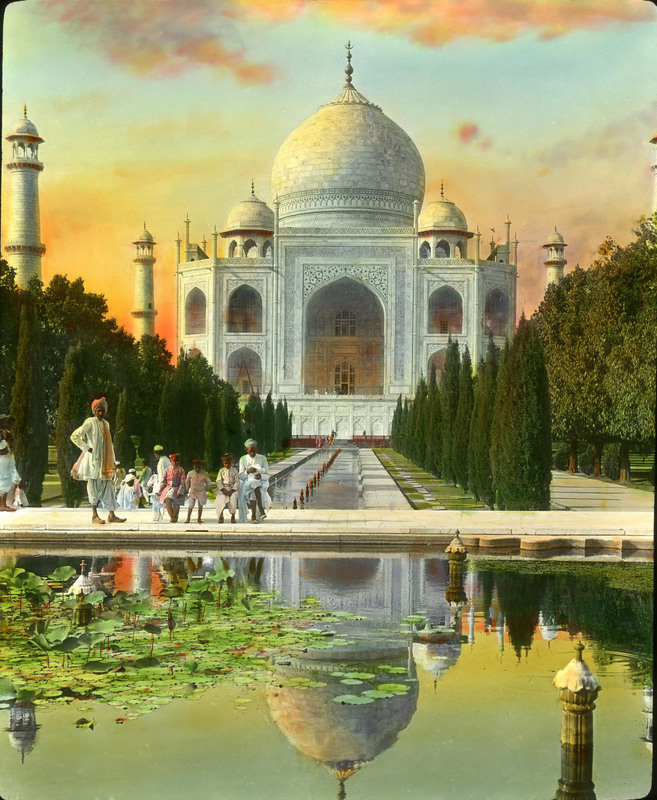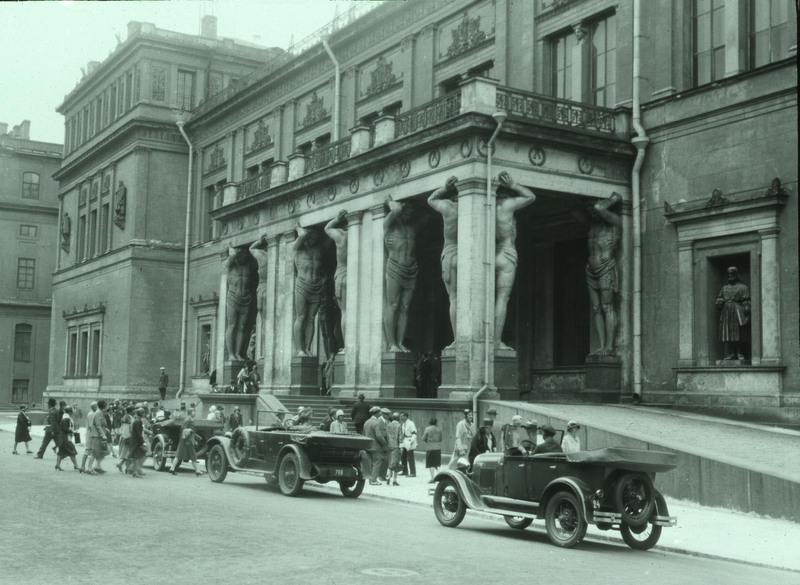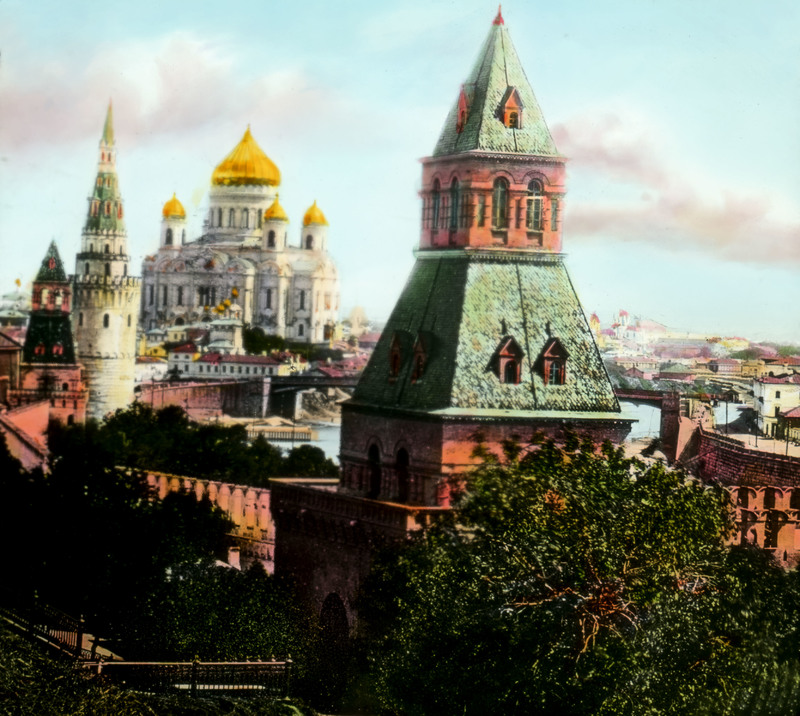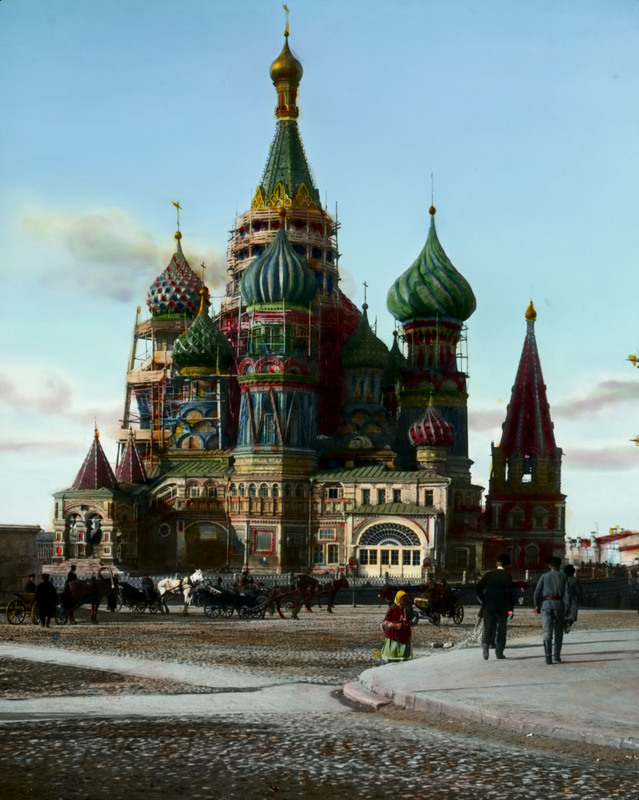Art in Russia
Some of McKnight's later lectures also featured art from Russian collections. She visited the state in the 1920s and 30s, during Soviet rule. On these trips, McKnight focused on visiting important cultural sites, such as the Hermitage Museum, in order to study the works of masters like Rembrandt, Rubens, and van Dyck (unfortunately she did not have her reproductions of these works colored). She was led through the galleries by museum directors who were proud to show her the works in their museum's collection. Though she tried to stay removed from the political state of the Soviet Union, McKnight commented about her travels that "one cannot stay in Russia...without getting an idea of what the government is doing to spread its ideas - how everything in Russia - Art, Theatre, Drama, Movies, Schools, Workmen's Clubs, Educational Institutions, is used as propaganda, to spread the doctrine of 'one for all and all for one.'" Despite this, McKnight focused her praise towards the care the government took in protecting its museums and galleries which she found to be in pristine condition. McKnight demonstrated her sense of political intellect and knew how to deal with potentially controversial issues. Stressing the need for sensitivity, she advised an editor, "It does not matter in articles with photographs whether or not we approve of Russia dumping Wheat and Timber into the U.S...My aim...is to show the fine condition of Galleries, remarkable masterpiece, and the care taken of pictures." As throughout most of her career, while she was attuned to many areas of social life, she made the "rather safe subject" of art her top priority.

Mother India in Pictures





